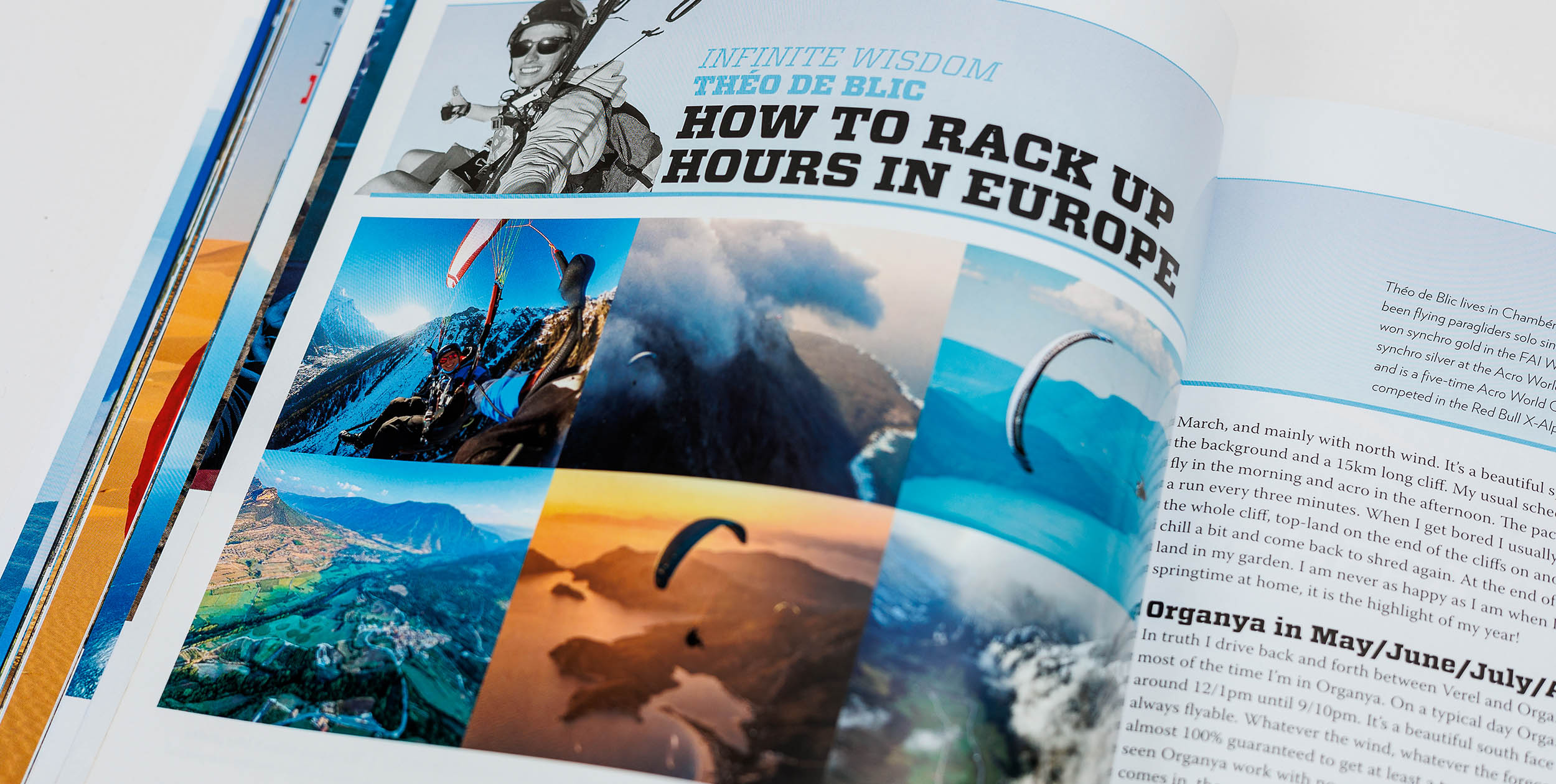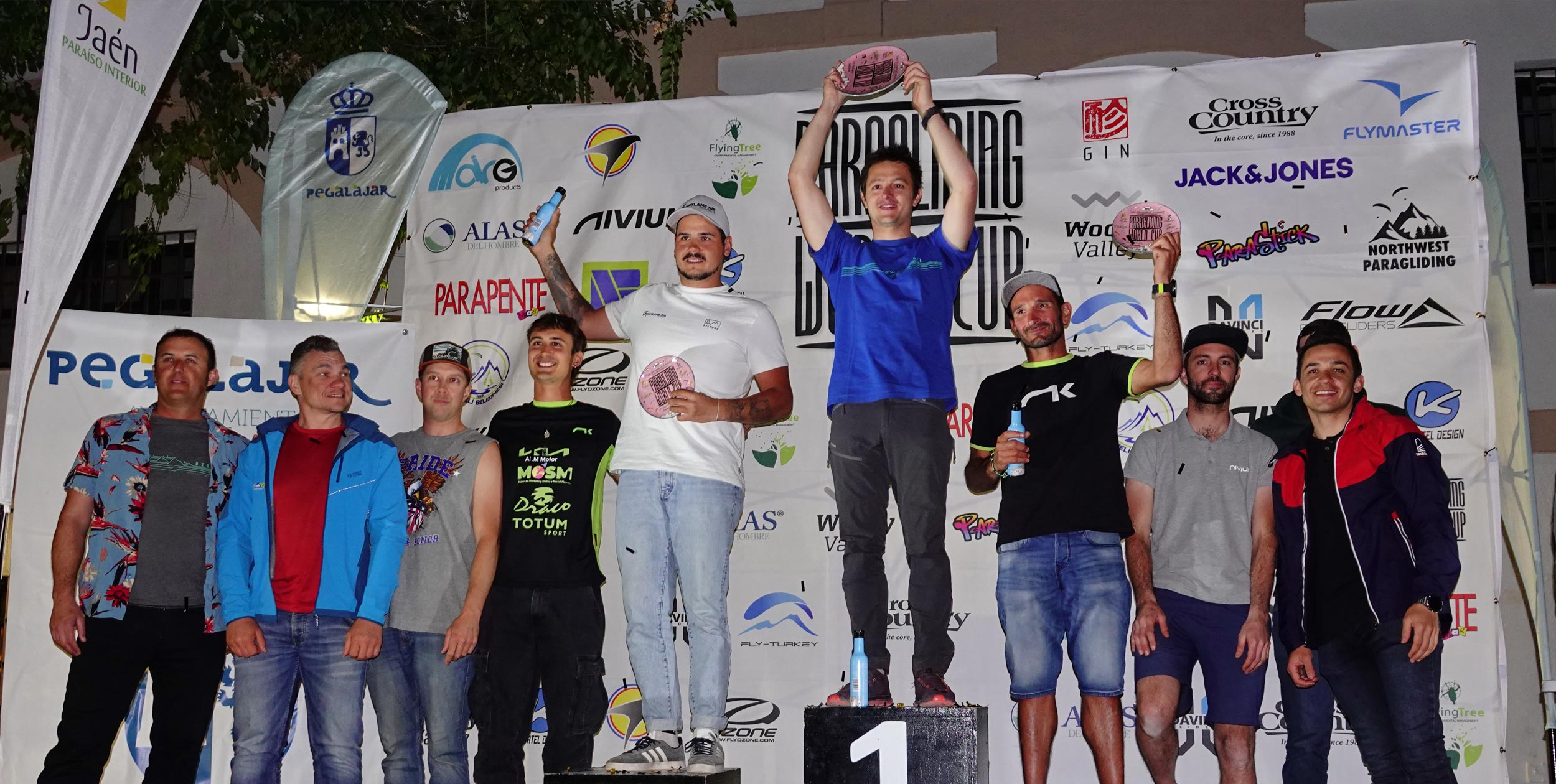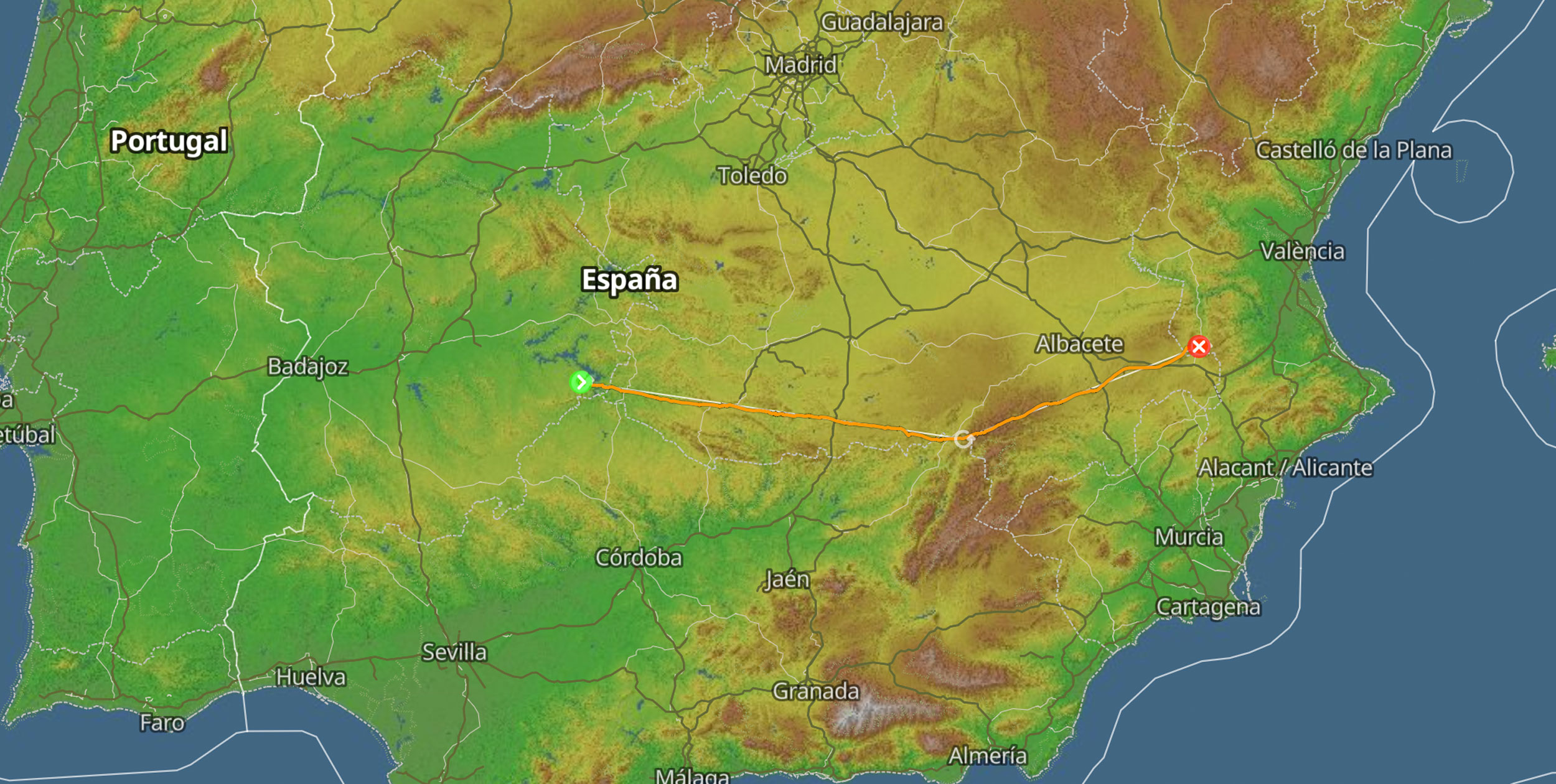The picturesque village of Algodonales in southern Spain sits nestled below the burly Sierra de Lijar mountain. It’s a European mecca for beginner and low airtime pilots who come to one of the numerous English, German or Spanish schools. During the days, shuttles from the various companies run up and down the hill ferrying clients, and in the evening the town square is full of pilots excitedly sharing their adventures in one of several cheap eateries on the main square.
It’s a good place to go to get your training signed off over an intensive week of guaranteed weather. If the weather at home is frustrating, low airtime pilots can come to progress and clock up hours with guided XC, SIV or paramotor conversion courses.
For pilots who are already in the XC game, there are some big distances and triangles to be flown here too when the day delivers. The sea breezes from the Mediterranean and the Atlantic battle it out, sometimes creating convergence areas that allow for big flights northwards.
The easterly and westerly winds that sweep the Strait of Gibraltar and North Africa sometimes encroach this far north and can blow the site out for several days. But typically it’s smooth early in the day and ideal for beginners. In peak season it builds by 2pm with punchy 5m/s thermals pushing up, even through the stronger winds, to 3,000m.
Low pressure systems can bring some pretty brutal inversions, but you can still enjoy mellow sunset flights that sometimes deliver restitution. The landscape of irregular rocky limestone peaks and undulating fields will test your hill and flatland flying techniques on every flight.
When to go
It’s flyable all year round, but does get stable in November. In June and July be prepared for the temperature to reach 35C by 11am. For big flights head here for March-May or September-October.
Take-offs
The spacious Levante take-offs, on the western edge of the hill, take southerlies and easterlies. They are at 1,027m with a bomb-out landing at 405m. When the wind switches from one take-off to the other, the thermal on the peak between them is working and it’s time to go. Three kilometres away, on the other side of the plateau, is the Poniente take-off, which takes southwesterlies. It goes from 908m down to the powerline-framed landing at 478m. ‘Levante’ by the way, derives from the Spanish/Latin for rising, and refers to the direction the sun rises from. ‘Poniente’ derives from putting down, and refers to where the sun sets. There’s also a smaller northerly take-off half way between the two, which doesn’t see as much action. It’s served by the western landing.
Cloudbase
Can lift to 3,000m, some 2,000m above take-off, on the right days, but more typically it’s 500m-1,000m above launch.
Hang gliding access
Absolutely. All the take-offs are big enough to accommodate hangies, and the eastern LZ is also plenty big enough for landing them. But if you’re flying to the west, hang gliders use the riverbed to land in. Look up Tony and Rona Web at Lejair (lejair.co.uk) for advice and shuttles.
Must be flown
Heading off in a westerly, the white-washed village of Olivera is just one or two thermals away once you go over the back, and a picturesque joy to fly over. Continue on until you’re squeezed under the Malaga airport approach corridor. If there’s a bit of north in your westerly, head southeast to Ronda, flying over olive groves as far as the eye can see. On easterly days, the coast is an ambitious but inviting endpoint. You’ll need the height to overcome the seabreeze at the end to avoid a premature landing. For a bit of adventure on quieter days take a dawn 90-minute hike up to launch and sled down, landing in town in time for a huevos revueltos y tostadas at the pilots’ favourite bar, Canijo.
Dangers and annoyances
The site has a tendency to get blown-out for several days at a time, but there are other nearby alternatives. The launch ridge can get crowded, with low airtime pilots innocently barrelling through thermalling gliders, so get up and get away. There are some airspace restrictions to be aware of if you’re going more than 30km. Landing options can be limited by the number of olive trees. In an emergency you can try to place it down between the trees, but you’ll discover the unique affinity olive branches have for glider lines when you drop your wing on one. Uncultivated fields will likely have livestock in them; you best hope that the bulls reared for fighting don’t confuse your red wing for an invitation to joust.
Accommodation
You’re spoiled for choice when it comes to pilot-specific accommodation, which usually comes thrown in with a course or shuttle service. Several companies offer rooms in townhouses and each one tends to be popular with specific nationalities. For instance, Ganter Fly is aimed at German speakers, whereas Fly Spain mostly Brits, and the twain only ever meet on take-off or in the bars. Fly Algo is a bit more cosmopolitan, and a good choice for more independent pilots. Park your camper in the LZ for free, or, for not much more, camp at CIVA which offers hot showers. Their shuttles up the hill cost about €10.
Guides and courses
There’s no shortage of courses and schools here. Pick a school based on whichever national certification body you want to get your license from. There are also a range of guiding options, with instructors flying alongside you to help you get those first XCs, and guide you down into unfamiliar landing zones wherever you end up. FlySpain and Andalucian Experience have been at it for years. The nearby lake is also used for SIV, with pilots towed up behind a boat. FlySpain also offer paramotoring courses.
Family activities and rainy days
Sit in the lively eateries of the main square, casually guzzling a never-ending stream of cheap tapas over several hours. Nearby medieval town Ronda has enough picturesque sights to fill an afternoon. For the more active, hire mountain bikes locally, choose a hiking route from one to six hours, or let your cerebral creative juices flow with a pottery class. Marbella and the Mediterranean beaches are 1hr40 away.
Weather info
All the usual suspects work well here, but a subscription to topmeteo.eu will get you great data like climb ceiling as well as winds aloft, which can help you plan your bigger flights. Avoid autumnal low-pressure weeks unless you want to feel the rodeo ride of 4m/s hitting an impenetrable inversion layer.
Getting there
Fly in to Malaga, which has direct flights from almost every cold dreary European capital, and hire a car. Outside of the main holiday season they are staggeringly cheap. Many of the schools offer a complimentary shuttle service from the airport if your flights work on their schedule.
Contacts
Paragliding guiding and more: flyspain.co.uk, andalucian-experience.co.uk, fly-algo.com, ganterfly.de, paraglidingspain.co.uk
Hang gliding: lejair.co.uk
Campsite, shop and shuttles: civalgodonales.com







